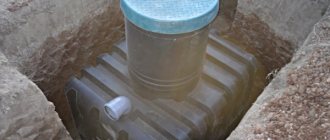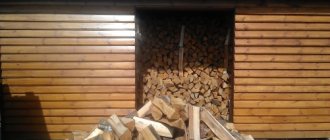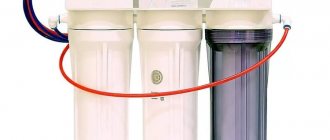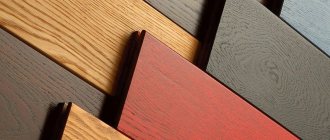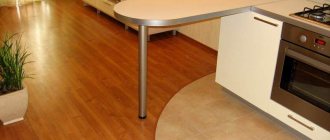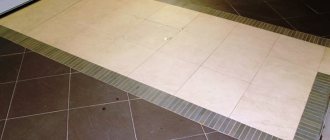16.01.2020
The thickness of the laminate is an important parameter of this floor covering, which should be taken into account during the floor installation process. There is a wide range of laminated flooring available on the market that differ from each other in size, pattern, design and quality.
The following properties depend on the thickness of the laminate:
- strength - the higher the thickness, the more reliable the floor covering;
- ability to withstand loads - dynamic (jumping, moving on a surface, moving furniture, household appliances) and static (permanently installed heavy objects);
- degree of insulation - the greater the thickness, the lower the thermal conductivity and sound insulation level.
How to choose the optimal laminate thickness for an apartment?
There are several features that determine the thickness of the selected laminate, including:
- Is it planned to have a heated floor under the laminate or not? If you plan, it is better not to choose a laminate no thicker than 10 mm. The thinner the laminate, the better the thermal conductivity and the warmer the floor.
- Are there significant differences in the floor or is the floor perfectly flat? Often, the floor in our apartments is far from ideal, so when installing, we advise you to familiarize yourself with the data on extreme differences, slopes and other floor defects and take them into account. For small differences of up to 2-4 mm per 2 meters (each manufacturer has different values, check on the packaging), it is better not to lay a thin laminate and choose a medium-thick one; for large or sudden differences, it is worth leveling the floor.
- Other features of the room, for example, the distance between the door and the floor.
The size of the floor covering also depends on the intensity of traffic:
- If there is not too much foot traffic in the room, a setting of 6-8 mm is sufficient.
- In more active areas, a material with a thickness of 8 to 10 mm will be required.
Below you will find the features of using laminates of different thicknesses and situations in which it is better to choose one or another thickness.
Ceiling insulation with a cold roof
If the attic is not used during the cold season, then only the attic floor is insulated, leaving the roof without insulation.
If there is no living room in the attic, then thermal insulation of the ceiling will allow heating only those rooms that are used Source chudopol.ru
When insulating an attic floor, a layer of insulation is placed on top of the floor itself and covers, among other things, the ends of the walls. If you place the insulation layer inside, the ceiling walls will still radiate heat outside.
This method of insulation significantly simplifies installation work. After all, laying it on a flat surface under the roof is easier than securing the material to the slopes.
About laminate layers
Classic laminate includes several layers, which ultimately form a durable and easy-to-use floor.
- the top layer is represented by the previously mentioned film of melamine and acrylic, used to prevent mechanical damage and fading of the board, moisture accumulation and the formation of a glossy surface;
- after that there is monotonous foil or paper, often complemented by an original pattern in the form of wood texture, imitation of natural stone or ceramic tiles;
- then comes the base layer (HDF board with high density values), which affects the thickness and ergonomics of the floor covering, the reliability of the locking elements and the quality of installation;
- and the bottom layer, tarred kraft paper, provides the necessary stability and protection from moisture.
The most popular laminate is 8 mm thick. The maximum thickness of the laminate does not exceed 12-13 mm.
Components, installation features
Before deciding what thickness of polycarbonate to choose for the canopy, you need to make a project and calculate the materials based on it. It is better to use the services of professional builders. You can use online calculators for these purposes.
The calculator will help you calculate the approximate number of polycarbonate sheets Source polycarbonat-rostov.ru
Any structure consists of a supporting structure and a polycarbonate coating.
The supporting structure includes supports and a frame for attaching polycarbonate. Made from metal, aluminum profiles, wooden beams. Regulated by regulatory construction acts and SNiP rules (2-523-81 for steel structures; 3.04.03-85 – corrosion protection).
The main components are made of polycarbonate and aluminum profiles.
Details for installing polycarbonate:
- profile: end, connecting, adjacent, corner, ridge, clamping strips.
- thermal washers with silicone gasket;
- seals, end tapes.
End profile Source baumaster69.ru
Polycarbonate expands as a result of temperature fluctuations. Due to the high coefficient of thermal expansion, a gap of 3-3.5 mm is made between the sheets of material. The hole for the fastening is drilled a few millimeters larger.
The standard length of cellular plastic sheets is 6 and 12 m, width 2.1 m. Profiles are produced in accordance with the size of polycarbonate - 6 m.
Installation diagram Source sadov0d.ru
Types of profiles:
- Connecting profiles in the shape of the letter “H” are one-piece, detachable from 2 parts of the base and cover. The base is screwed to the longitudinal guide bars of the frame. The roof snaps or screws onto the base.
- Adjacent in the shape of the letter "F". Installed in places adjacent to the wall. Attached with self-tapping screws or sealant.
- The corners are connected with a special profile made of plastic or aluminum. They produce corner profiles with different degrees of slope.
- If the roof shape has slopes, a ridge profile is installed at the joint junctions.
- The end plate in the shape of the letter “P” acts as a plug. It is installed along the edge with an indentation, a hole is made in it so that the moisture accumulated inside the honeycomb flows to the ground. Before installing the plank, end tape is glued to the end, preferably with perforated holes.
- Pressure profile or strip. They are usually made from aluminum. Additionally, the sheet is fixed.
Components for polycarbonate Source rs36.rf
Thin laminated coating
The thinner the laminate, the less material is required for its manufacture, and accordingly the cost per square meter will also be less. In the worst case, a thin laminate can serve the owner for up to 5 years. Locks on thin slats quickly break due to careless installation or differences in floor heights, which leads to the appearance of cracks. Therefore, to extend the service life, you need to carefully level and prepare the base. The deadlines for completing work in this situation increase.
The smallest thickness is 7 mm. This is an ideal option for a study or bedroom with low traffic and a relatively flat floor. Thin laminate is ideal for heated floors. Some use thin laminate to decorate walls and even ceilings.
Sheet dimensions
The width of each profile brand is standard, for example, C8 has a total width of 1200 mm, and profiled sheet C20 has a total width of 1150 mm. Any length of rolled metal is possible up to 12 meters. This is very practical if it is necessary to cover long slopes of 4 meters or more, since it allows you to avoid horizontal joints, which has a positive effect on the tightness of the roof. However, when the length of the slopes is 6...8 meters or more, it is not recommended to order corrugated sheets (especially with a low profile C20 or C21), since such a length will complicate the lifting of the metal onto the roof and there is a risk of deformation of the corrugation due to the large mass of the sheets. And transportation of long items will cost much more, since large-sized vehicles will be involved.
Medium thickness laminated coating
The truth lies in the middle. Same with laminate! Average indicators in this case are optimal. A thickness of 8-10 mm is an excellent choice for an apartment: kitchen, corridor, hallway, study, bedroom. Well, again, the thicker the material, the higher its strength, reliability and price.
During the installation process, it is worth remembering that the floor also rises. It turns out that when making calculations, you need to take into account the height of the doorway so that when opening/closing the door does not touch the top layer. Be sure to take into account the location of heavy furniture and draw up a plan indicating areas of intense movement of people.
You can view all 8 mm thick laminate collections in this category. The options presented in the section for classes 33 and 34 with a thickness of 8 mm are one of the most popular categories in the Tetrum store.
Which insulation is better
When determining the most affordable material, you need to take into account the cost of installation and transportation. At a lower price, insulation can cost a pretty penny due to transport costs and additional installation costs.
Expanded polystyrene
Extruded polystyrene has excellent thermal conductivity, which makes it possible to apply a thin layer of insulation to the roof. Its light weight, ease of fixing to the surface and cost-effectiveness make the material highly popular. Despite the price.
Expanded polystyrene Source dmcp.ru
See also: Catalog of companies that specialize in roofing materials.
Mineral wool
Mineral wool, as this insulation is called for short, is a material made from mineral fibers. Mineral wool is laid in slabs, which need to be additionally secured. The main advantage is the ability to withstand high temperatures. This is an ideal material for insulating the roof of a bathhouse.
Polyurethane foam
Polyurethane foam is thermal insulation applied by spraying. It can be soft or hard. Soft is used for internal thermal insulation, and hard - only for external insulation. This type of insulation should only be applied by professionals. An ideal option for roofs of complex structures, it has economical consumption.
Thick laminated coating
Coatings with a thickness of 10-12 mm are intended for offices, but can also be used in apartments, for example, in corridors and living rooms. This is a material with decent strength and sound insulation. It costs more than previous options, but its service life is truly long. A laminate of this thickness is worth choosing if you do not want to spend time leveling the floor or expect that there will be serious loads on the floor in the room.
Class and purpose
The choice of room for laying laminate is influenced by the class of flooring. Depending on wear resistance, there are 7 main classes.
- The first and rarest category is represented by classes 21, 22 and 23, which are no longer produced. Their quality is much worse than that of their competitors.
- the second group, which is characterized by high wear resistance, opens from class 31 (service life from 3 to 5 years, intended for rooms with low traffic);
- Class 32 – designed for homes and offices with moderately heavy traffic, service life – up to 15 years;
- Class 33 is produced for places with regular traffic (residential premises, offices, small shops), the service life is from 15 to 20 years;
- Class 34 – premises with active visits, duration of use – up to 20 years.
Class 33 laminate from Tetrum will last up to 30 years in residential premises, and class 34 laminate in an apartment can last up to 50 years!
The existing division into classes is very arbitrary. After all, the degree of strength of the material also depends on the manufacturing technology. But if the class is known, then the thickness can also be known, since these parameters are closely related to each other.
What is the structure of laminate flooring and what does it affect?
To answer the questions above, you need to understand what laminated panels are made of. The usual coating structure is four layers, each of which performs its own function.
- The bottom layer is a kind of stabilizer that protects all subsequent layers from moisture penetration into them. This layer is made from tarred or unrefined paper. Particularly durable types of laminate are also equipped with a soundproofing membrane.
- The next layer - the thickest and toughest - is usually made of fiberboard. If the product instructions contain the mark “NDF” (High Density Fiberboard), this means that the material has increased strength.
This is where the locking profile is placed, ensuring the connection of the panels to each other. The final thickness of the laminate depends on the height of this layer.
- The third layer is decorative. It is made from special paper or furniture foil, onto which, in fact, a pattern with various imitations is applied.
- The final layer performs a protective function. The operational capabilities of the coating largely depend on it. This layer is made from melamine or acrylic resin. Depending on its thickness, laminate is divided into several classes (see table).
Click and Lock locks
When purchasing flooring, you should consider the type of lock. The elements of the “lock” category were the first to appear on the market. They are built on the tongue-and-groove principle, where the surfaces are “knocked” together. Here, accuracy and strong adhesion play an important role, for which special notches are used. The coating remains smooth. In case of prolonged use, the comb wears out and gaps form between the floorboards. Over time, laminate with this type of lock has practically disappeared.
Later, laminate with a “click” lock appeared on sale, which quickly became widely in demand. Here the outer tenon is made in the form of a kind of hook, which clicks in a special way during engagement and fixation in the groove. To dismantle, you just need to lift any lamella. Short-term installation and disassembly is what made these locks popular.
We offer an interesting solution - laminate 33 class 8 mm with a click lock.
Substrate
Another important factor influencing the quality of flooring installation is the underlay.
Typically, the layer thickness required for proper installation of laminate flooring is in the range from 2 to 5 mm. The underlay allows you to eliminate unnecessary unevenness of the subfloor, without bending the lamellas while walking. In addition, this component contributes to the required thermal and sound insulation of the floor covering.
To achieve the required thermal conductivity and noise protection, foil with a highly reflective effect is usually used. It is expensive, but the result is fully worth the investment.
A good alternative to foil is compressed cork chips, which are environmentally friendly and prevent the formation of mold. The downside is the low ability to withstand static loads. Such a plug can sag as a result of the influence of the significant weight of large furniture.
A budget option is a substrate made from polystyrene or polyethylene foam. Its positive features are the necessary water resistance, chemical inertness, a high degree of safety, and ease of installation. However, during operation, such a material inevitably loses its properties and may collapse and sag, which will contribute to the deformation of the coating.
When choosing a substrate for your home, remember that the stage of laying the laminate is the final one. Using the optimal combination of laminate and underlay thickness, the height of the new floor is adjusted in relation to the door leaf and the adjacent room.
Video description
Should you trust online calculators, watch the video:
The calculator helps estimate the cost of work Source www.strojmag.ua
Using the calculator, you can calculate the number of bricks for masonry, the cost of finishing, the dependence of insulation consumption on the width of the material, and many other parameters.
It is important to remember that the calculator does not provide exact numbers that can be used when designing or purchasing materials. It only helps to understand the principle of calculations and determine how much the same work will cost using different materials or projects. Full construction calculations can only be performed by qualified specialists.
More about choosing thickness
The laminate installation technology is extremely simple. Therefore, almost everyone can master it. You don't need any special education here. To do the job perfectly, just carefully study the appropriate video with the master class and do everything exactly as recommended by a professional.
Now all that remains is to make the final decision about what thickness is needed in a particular case and calculate the costs.
Everyone's wallet size is different. Therefore, reasonable savings never hurt. First, you should create a plan of the premises, where you should note the activity of people moving and the installation location of heavy furniture. Then, based on the specified plan, determine where you need to order class 34 coating with a thickness of 12 mm. And where - class 33 lamellas with a thickness of 8 mm are suitable.
The proposed classes are an ideal choice for an apartment, since they are able to withstand both static and dynamic loads. And if you also level the subfloor well and use a substrate, the service life of the coating will increase by several years.


